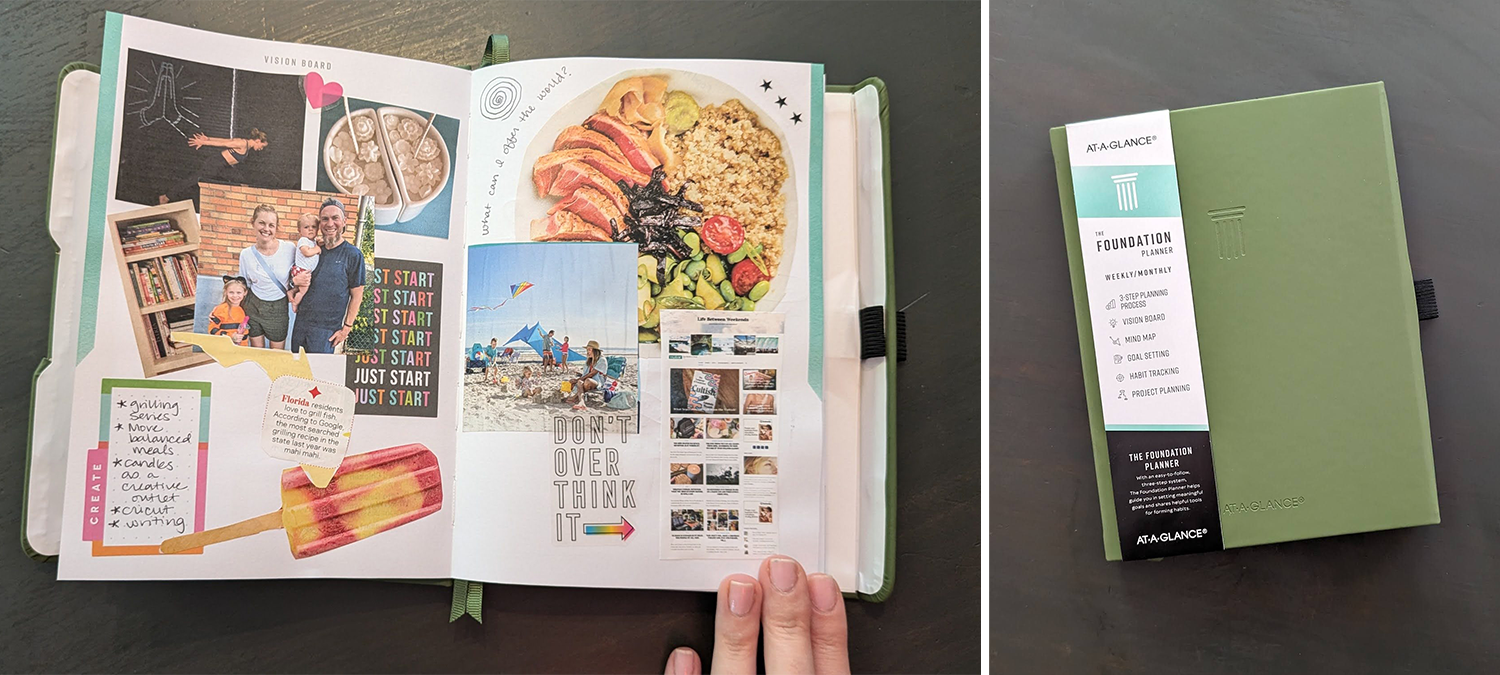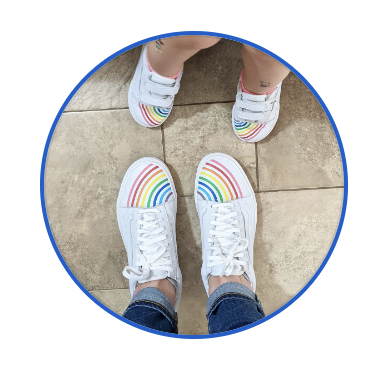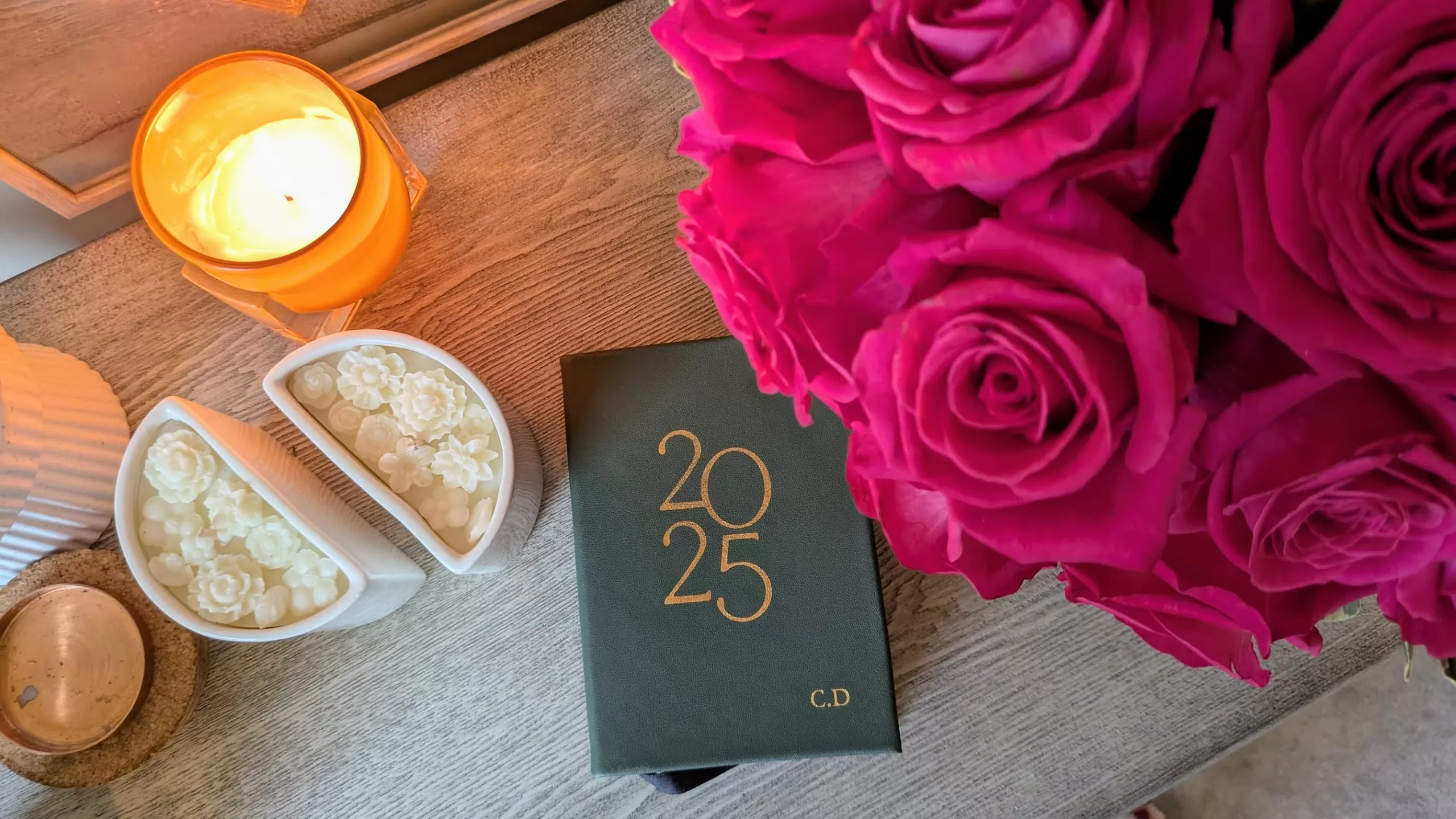This post may contain affiliate links. Every link is hand-selected by our team, and it isn’t dependent on receiving a commission. You can view our full policy here.
Since middle school, I’ve had three-, five- and ten-year goals. It wasn’t something my parents impressed upon me; I just had a very clear vision of what I wanted out of life and found myself Rachel Berry-caliber devoted to following it. (Namely, going to college, working in magazines and publishing a book of some kind.)
There were so many things I wanted to do, and each project evolved into a bigger dream to pursue. And then I hit those major goals…and got seriously burned out. I had a kid, life got more complicated, and those dreams went from seeming linear—learning one skill to master another—to a bunch of fuzzy, competing ideas, with no clear direction. I wanted something more; I just had no idea what. Or rather, 237 fragments of ideas, and no real tug of which one I wanted to pursue.
I just felt off. I was okay with a slower season of life and changing priorities, but over the past year, I’ve really wanted to do…something. No course, podcast or journal prompt seemed to get me closer, either—until I started using the At-A-Glance Foundation Planner.

First Impressions of the At-a-Glance Foundation Planner
It was one of two planners the brand sent me for review consideration, and with so many generic agendas crossing my desk, I was prepared to write it off as yet another. I liked its slim design and magnetic-snap closure; the hunter green color and discreet color made it look very professional and polished in any setting. And at $22, it’s one of the more affordable yearly planners out there.

What Sets The Foundation Planner Apart
Like your mom always said, it’s what’s on the inside that counts, and that’s where the agenda really delivered. Plenty of planners have areas for mind mapping or vision boarding; the Foundation has a multi-page intro that breaks down its goal creation and planning process, with images of the pages that follow filled out, so you can get a sense of how to get the most out of it.
That seems so simple, but really, it’s crucial. It’s easy to see pages of things to fill out—especially when you’re not sure what you want out of the year ahead—and feel overwhelmed. You dismiss it as something to do later, “when you have more time,” and then you start using the agenda portion, filling it out with that day’s must-do tasks and never getting around to dreaming big. A year passes, and you’ve crossed off the must-do’s to get through life, but you’ve never moved the needle to where you want to be. At least that’s the case for me.
I carved out an hour—setting an alarm, so it wouldn’t take over my evening—and committed to printing and cutting out images (from the only magazine in my house) to create the vision board, then doing a brain dump in the mind map section of the different areas of my life and what an awesome year would look like for me.

When My Breakthrough Happened
When I got stuck, I turned to the notes pages next to it and started journaling stream-of-consciousness, trying to suss out why I wanted certain things and what was a “should” vs. a “must” in my life. (Too many “shoulds” are a sign you’re living for someone else’s expectations and can embitter you, I’ve found.)
From there, I ranked my big goals on a scale of 1-10 of how passionate I was to jump up and “storm the castle,” as Sophia Bush says, or tackle them right away. It helped me narrow my focus and identify the top three goals for the year, then break them down into mini goals (or benchmarks) for the month ahead.
Suddenly, I had clarity on what I wanted—and needed—to do over the next year. And how to get there over the next few weeks and months. It was freeing and empowering.

Goal-Setting Is Great, But How Does the Foundation Planner Handle Daily Tasks?
As you progress through the planner, things get more granular.
- There’s a two-page monthly calendar, with a section to highlight that month’s main goal and the three steps you’ll take to achieve it (or get closer to it), as well as space to jot to-do’s (which seem a little odd for a monthly spread)
- The Weekly Agenda is a two-page spread, with a section at the top to list your three goals, track habits and log your main focus and win. Each day is offers a roughly 1.5-inch row to note three top tasks and time block your day.

While I like that there’s a spot to list your goals every week so they stay top of mind, realistically, I can see this practice feeling tiresome and redundant…and quickly falling by the wayside. (Particularly all the fields to fill out: Subject, start/end dates, next steps.)
The space for each day’s agenda is decent, though I would’ve preferred to ditch the Weekly Win/Focus and Habit Tracker in favor of space for to-do’s or notes. There isn’t much room for that as is.
The Verdict:
Pros
- Small, compact size
- Great goal-mapping section
- Intro guide takes intimidation out of getting started
- Clean, minimalist design
- Like all undated planners, can start anytime
Cons
- No tabs for each month
- Not much room for to-do lists
- Like all undated planners, must fill in each date
The Foundation planner does a great job helping you dream big and break it into sizable chunks, and the weekly agenda is excellent for people who are into time blocking or tend to have plenty of meetings on their calendar. (If you’re the to-do list type, I’d recommend using a Post-It note to jot those down, as there isn’t quite enough room in the weekly spreads for that.)




